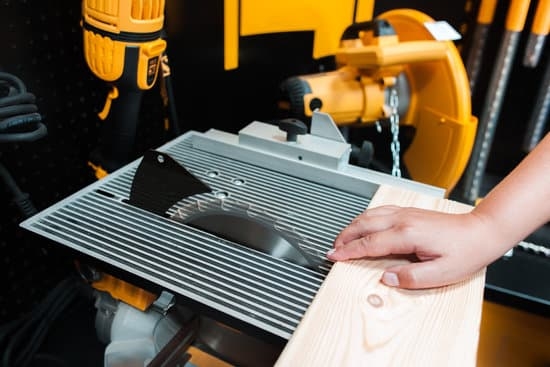What is the trend in home woodwork? Home woodwork has been steadily gaining popularity in interior design, with more homeowners opting to incorporate wooden elements into their living spaces. This trend can be attributed to a growing appreciation for natural materials and a desire to bring warmth and character into homes through woodwork.
- Traditional vs. Modern Woodwork: While classic woodwork styles have always held a timeless appeal, modern designs are currently trending in interior design. The contrast between traditional and contemporary woodwork allows homeowners to choose between elegant, intricate details or sleek, minimalist finishes for their interiors.
- Popular Types of Wood: When it comes to home woodwork projects, there is a wide variety of woods to choose from, each with its own unique characteristics. From the rich warmth of walnut to the light and airy feel of oak, different types of wood can lend a distinct aesthetic to any space. Understanding the qualities of each type of wood can help homeowners make informed decisions when embarking on their own woodwork projects.
Traditional vs Modern Woodwork
Woodwork has been a timeless element of home décor, but it is experiencing a resurgence in popularity as homeowners look for ways to add warmth and character to their living spaces. The trend in home woodwork is shifting towards a more modern approach, blending traditional craftsmanship with contemporary design elements. Whether it’s sleek and minimalist furniture or intricate statement pieces, mixing classic styles with modern aesthetics creates a unique and personalized touch to any room.
When comparing traditional woodwork to modern designs, the differences are evident in both style and functionality. Traditional woodwork often features ornate carvings, intricate details, and dark wood finishes that exude a sense of sophistication and grandeur. On the other hand, modern woodwork embraces clean lines, simplistic shapes, and lighter wood tones for a more streamlined and minimalist look. The shift towards modern woodwork reflects the current preference for sleek and uncluttered interiors that prioritize functionality without compromising on style.
To incorporate the trend in home woodwork into your own space, consider the following options:
- Opt for a mix of traditional and modern pieces to create a balanced look that blends both styles seamlessly.
- Experiment with different types of wood such as oak, walnut, or maple to add texture and visual interest to your décor.
- Embrace natural finishes or bold stain choices to make a statement piece that stands out in any room.
The trend in home woodwork offers endless possibilities for creativity and personal expression. By exploring the contrast between traditional and modern styles, homeowners can elevate their interior design while adding a touch of warmth and authenticity to their living spaces.
Popular Types of Wood
Wood is a versatile material that can be used in various home woodwork projects, adding warmth and character to any space. Understanding the different types of wood available is essential when choosing the right material for your project. Here are some popular types of wood commonly used in home woodwork:
- Pine: Pine is a softwood known for its affordability and ease of staining. It’s perfect for beginner woodworkers due to its workability.
- Oak: Oak is a hardwood that is durable and resistant to moisture, making it suitable for furniture pieces or flooring.
- Maple: Maple is a dense hardwood with a smooth, fine grain that works well for cabinets, shelves, and intricate woodworking projects.
Each type of wood has its unique characteristics, from grain patterns to color variations, allowing homeowners to choose the right material based on their project needs. When considering what type of wood to use for your home woodwork project, it’s important to take into account factors such as durability, cost, and aesthetic appeal.
In recent years, there has been a noticeable shift towards using reclaimed wood in home woodwork projects as part of sustainable design practices. Reclaimed wood not only adds a rustic charm to interiors but also reduces the demand for new materials, promoting eco-friendly choices.
Additionally, incorporating exotic woods like teak or mahogany can bring a touch of luxury and sophistication to any woodworking project. This trend reflects a growing interest in environmentally conscious practices within the realm of interior design.
By understanding the characteristics and benefits of different types of wood commonly used in home woodwork projects, homeowners can make informed decisions when embarking on DIY woodworking endeavors or hiring professionals for custom pieces. Whether opting for classic choices like oak or experimenting with reclaimed materials, the trend in home woodwork showcases a diverse range of options tailored to individual preferences and design goals.
DIY Woodwork Projects
Woodworking has become a popular trend in home décor and interior design, with more and more homeowners showing interest in incorporating wood elements into their living spaces. One of the reasons for this trend is the desire for a more natural and organic look that wood brings to a room.
Additionally, the DIY culture has thrived in recent years, making it easier for individuals to try their hand at woodworking projects and create unique pieces for their homes. So, what is the trend in home woodwork?
In today’s modern world, traditional woodwork styles are being juxtaposed with contemporary designs to create a unique blend of old-world charm and sleek, minimalist aesthetic. This fusion allows homeowners to experiment with different techniques and finishes to achieve their desired look. Whether it’s rustic farmhouse vibes or industrial chic elements, there is a DIY woodwork project suitable for every style preference.
When it comes to choosing the right type of wood for DIY projects, popular options include oak, pine, cedar, and walnut due to their durability and versatility. Each type of wood has its own distinct characteristics that can impact the final appearance of a piece.
For example, oak is known for its strength and prominent grain patterns, while cedar offers a beautiful aroma and natural resistance to decay. By selecting the appropriate wood for their projects, homeowners can ensure the longevity and visual appeal of their creations.
| Wood Type | Characteristics |
|---|---|
| Oak | Strength and prominent grain patterns |
| Pine | Lightweight with subtle grain patterns |
| Cedar | Beautiful aroma and natural decay resistance |
| Walnut | Rich color variations and medium hardness |
By embracing DIY woodworking projects, homeowners can add a personal touch to their living spaces while staying on-trend with the popularity of wooden accents in interior design. From simple shelving units to intricate furniture pieces, there are endless possibilities for incorporating woodwork into home décor. With the right tools and materials, anyone can unleash their creativity and embark on fulfilling woodworking adventures within their own homes.
Statement Wood Pieces
In recent years, there has been a noticeable shift in interior design towards incorporating statement wood pieces to add character and style to a room. Homeowners are increasingly drawn to unique and eye-catching wood elements that serve as focal points, creating a warm and inviting atmosphere.
One of the trends in home woodwork is the use of live edge tables, which are crafted from wood slabs with the natural edges of the tree intact. These tables add a touch of rustic charm and bring a connection to nature into the space.
Reclaimed Wood Accents
Another popular trend in home woodwork is the inclusion of reclaimed wood accents. Reclaimed wood is sourced from old barns, factories, or other structures, giving it a distinct character and history that adds depth to any room. Whether used as wall paneling, shelving, or furniture pieces, reclaimed wood adds a sense of authenticity and sustainability to the space. The imperfections and weathered look of reclaimed wood create a unique appeal that cannot be replicated with new materials.
Mixing Wood Elements
To fully embrace the trend of statement wood pieces in home design, homeowners are experimenting with mixing different types of woods for added visual interest. Combining light and dark woods, different grain patterns, or even contrasting finishes can create a dynamic look that adds texture and dimension to a room.
By carefully selecting and curating various wood elements within a space, homeowners can achieve a cohesive yet eclectic aesthetic that reflects their personal style and creativity. Overall, the trend in home woodwork is all about celebrating the beauty of natural materials while infusing personality and character into interior spaces through statement wood pieces.
Eco-Friendly Woodwork
Benefits of Eco-Friendly Woodwork
With the increasing focus on sustainability and environmental consciousness, the trend in home woodwork is shifting towards utilizing eco-friendly materials and practices. Eco-friendly woodwork not only contributes to a healthier ecosystem but also offers numerous benefits for homeowners. Choosing sustainable wood options helps reduce deforestation, minimizes carbon footprint, and ensures that future generations have access to natural resources. Additionally, eco-friendly wood treatments and finishes are non-toxic, creating a safer environment for households.
Sustainable Wood Options
One of the key aspects of eco-friendly woodwork is selecting sustainable wood options that are sourced responsibly and ethically. Popular choices include bamboo, reclaimed wood, FSC-certified lumber, and fast-growing species like pine or cedar. Bamboo is known for its rapid growth rate and renewability, making it an excellent eco-friendly alternative to traditional hardwoods.
Reclaimed wood adds character and history to home decor while reducing waste. FSC-certified lumber guarantees that the wood comes from sustainably managed forests, promoting responsible forestry practices.
Green Woodworking Practices
In addition to choosing sustainable wood materials, adopting green woodworking practices is essential for reducing environmental impact. This includes using non-toxic adhesives, finishes, and sealants that are free from harmful chemicals like volatile organic compounds (VOCs).
Utilizing energy-efficient tools and equipment, such as electric sanders or saws with low energy consumption, can also help minimize carbon emissions during woodworking projects. Embracing upcycling and repurposing old furniture or wooden structures promotes waste reduction and encourages creativity in home woodworking endeavors.
By embracing eco-friendly woodwork materials and practices, homeowners can contribute to a more sustainable future while incorporating unique and stylish elements into their living spaces. The trend in home woodwork is evolving towards environmentally conscious choices that prioritize both aesthetic appeal and eco-friendliness. As sustainability continues to be a top priority for consumers globally, incorporating eco-friendly woodwork into interior design becomes not just a trend but a responsible lifestyle choice.
Woodwork Color Trends
On the other hand, painted wood accents are gaining momentum in the world of home design. From soft pastels to bold hues, painted wood pieces allow homeowners to infuse personality and creativity into their interiors.
Whether it’s adding a pop of color with a vibrant accent wall or incorporating color-blocked furniture pieces, painted wood accents can instantly refresh a room and create visual interest. This trend offers endless possibilities for customization and allows individuals to experiment with different color palettes to reflect their personal style.
Furthermore, bold stain choices are making a statement in contemporary home woodwork. Opting for deep, dark stains like ebony or espresso can create a dramatic contrast within a space while exuding elegance and sophistication. These bold stain choices are perfect for those looking to make a bold design statement or add a touch of luxury to their interiors. By embracing unconventional stain colors, homeowners can elevate their woodwork projects and showcase their creativity in an unexpected way.
| Woodwork Color Trends | Data |
|---|---|
| Natural Wood Tones | Bring warmth and sophistication; versatile for various interior styles. |
| Painted Wood Accents | Add personality and creativity; offer endless customization possibilities. |
| Bold Stain Choices | Create dramatic contrast; exude elegance and sophistication. |
Tips for Incorporating Woodwork
In conclusion, the trend in home woodwork is continuously evolving, reflecting a blend of traditional and modern design elements that appeal to a wide range of homeowners. From traditional woodworking styles to innovative contemporary designs, there is a growing interest in incorporating unique wood pieces into interior spaces. The popularity of home woodwork can be attributed to the warmth and character that wood brings to a room, creating a cozy and inviting atmosphere.
Furthermore, as sustainability becomes increasingly important in design practices, the use of eco-friendly wood materials is on the rise. Homeowners are seeking out environmentally conscious options for their woodwork projects, contributing to a more sustainable approach to interior design. Additionally, the trend of utilizing statement wood pieces like live edge tables or reclaimed wood accents adds a touch of individuality and personality to any space.
For those looking to embrace the trend in home woodwork, there are plenty of DIY projects that can be easily incorporated into different areas of the home. Whether it’s adding wooden fixtures or furniture pieces with bold stain choices, integrating woodwork can instantly elevate the overall look and feel of a room. By following these tips for incorporating woodwork into your home, you can create a stylish and personalized space that seamlessly blends traditional craftsmanship with modern design aesthetics.
Frequently Asked Questions
Is Light Wood Coming Back in Style?
Light wood is definitely making a comeback in interior design trends. Its natural finish and versatility make it a popular choice for creating a warm and inviting atmosphere in modern spaces. With its ability to brighten up a room and complement various color schemes, light wood furniture, flooring, and accents are becoming increasingly popular choices.

Hi everyone! I’m a woodworker and blogger, and this is my woodworking blog. In my blog, I share tips and tricks for woodworkers of all skill levels, as well as project ideas that you can try yourself.





